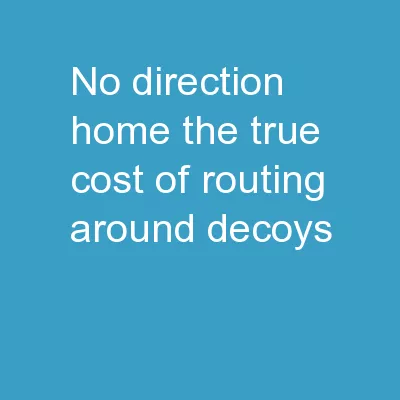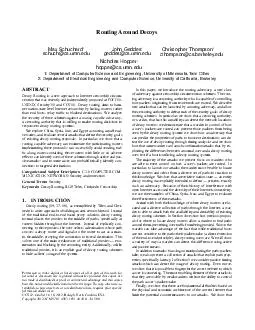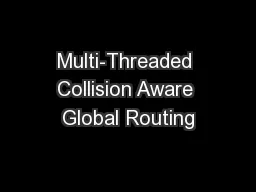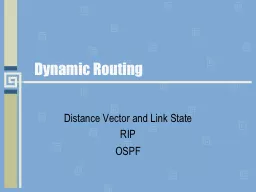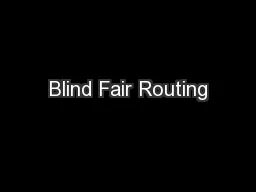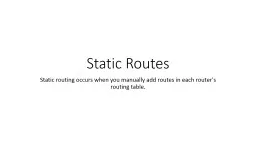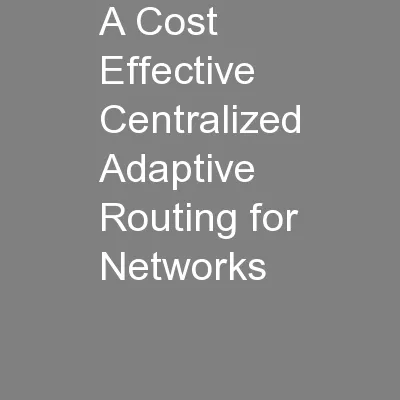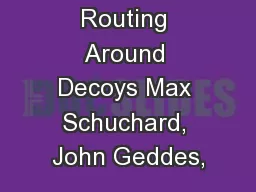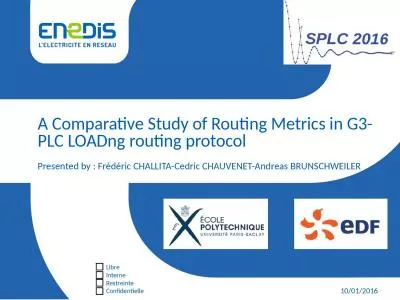PPT-No Direction Home: The True cost of Routing Around Decoys
Author : pamella-moone | Published Date : 2018-11-06
Presented by Pallavi Kasula Background Autonomous systems AS Border Gateway Protocol BGP Internet Censorship Decoy Routing Routing Around DecoysRAD Autonomous SystemAS
Presentation Embed Code
Download Presentation
Download Presentation The PPT/PDF document "No Direction Home: The True cost of Rout..." is the property of its rightful owner. Permission is granted to download and print the materials on this website for personal, non-commercial use only, and to display it on your personal computer provided you do not modify the materials and that you retain all copyright notices contained in the materials. By downloading content from our website, you accept the terms of this agreement.
No Direction Home: The True cost of Routing Around Decoys: Transcript
Download Rules Of Document
"No Direction Home: The True cost of Routing Around Decoys"The content belongs to its owner. You may download and print it for personal use, without modification, and keep all copyright notices. By downloading, you agree to these terms.
Related Documents

